Analysis of Trinity and Revelation in Christian Theology Views
VerifiedAdded on 2023/04/21
|5
|866
|112
Essay
AI Summary
This essay explores the Christian doctrine of the Trinity, focusing on the Father, Son, and Holy Spirit as manifestations of the Supreme God within a monotheistic framework. It delves into the central content of the Trinity in Christian theology, discussing its function based on the ideas of Kärkkäinen (2014) in 'Trinity and Revelation: A Constructive Christian Theology for the Pluralistic World.' Kärkkäinen's approach relates world experiences to the theological concept of the Trinity, differing from mainstream theological explanations by emphasizing the interaction between God and humanity, with Jesus Christ as the embodiment of this connection. The essay argues that human existence is an interconnection between the human and divine, advocating for secularizing religious teachings to promote social reform and gender equality, diverging from traditional theological ideas.
1 out of 5
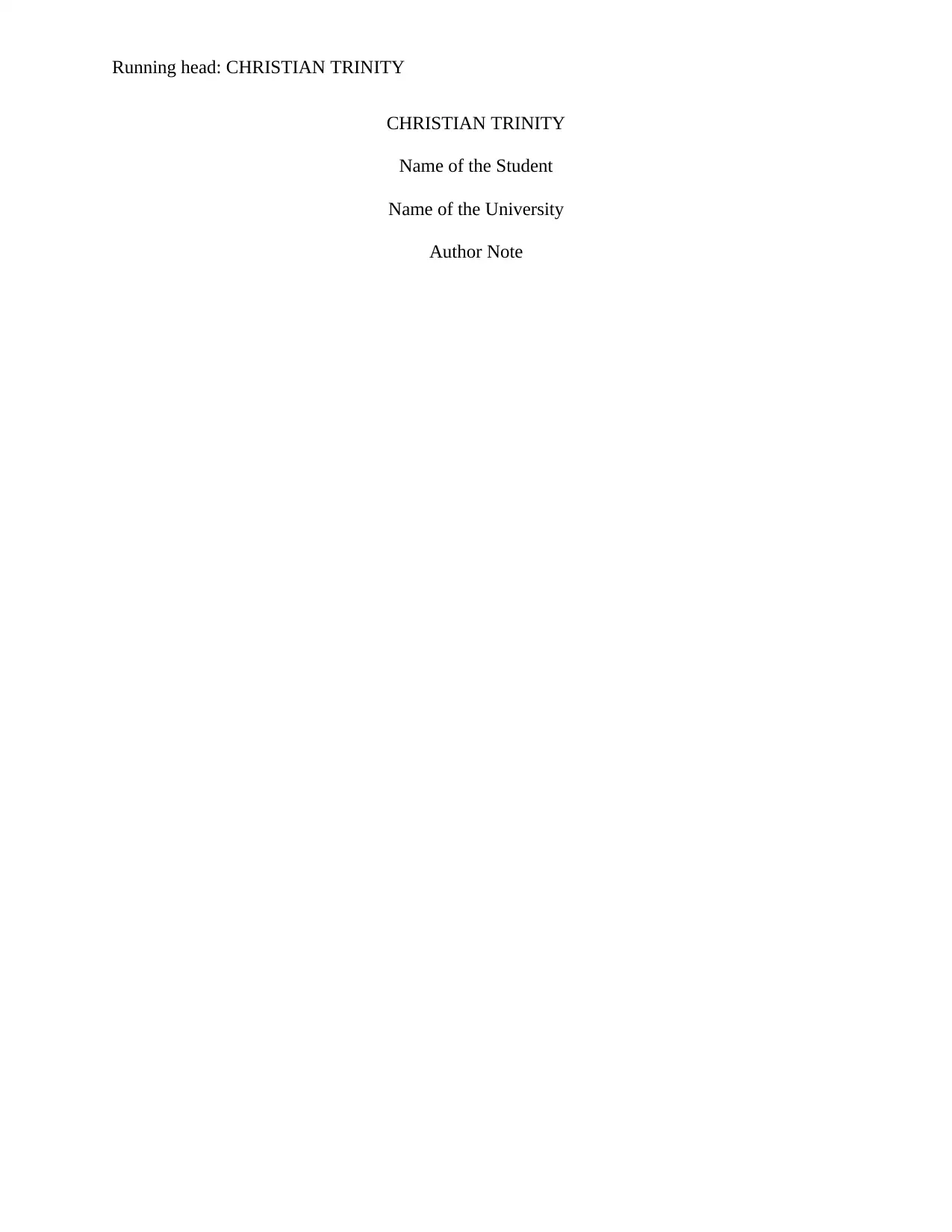
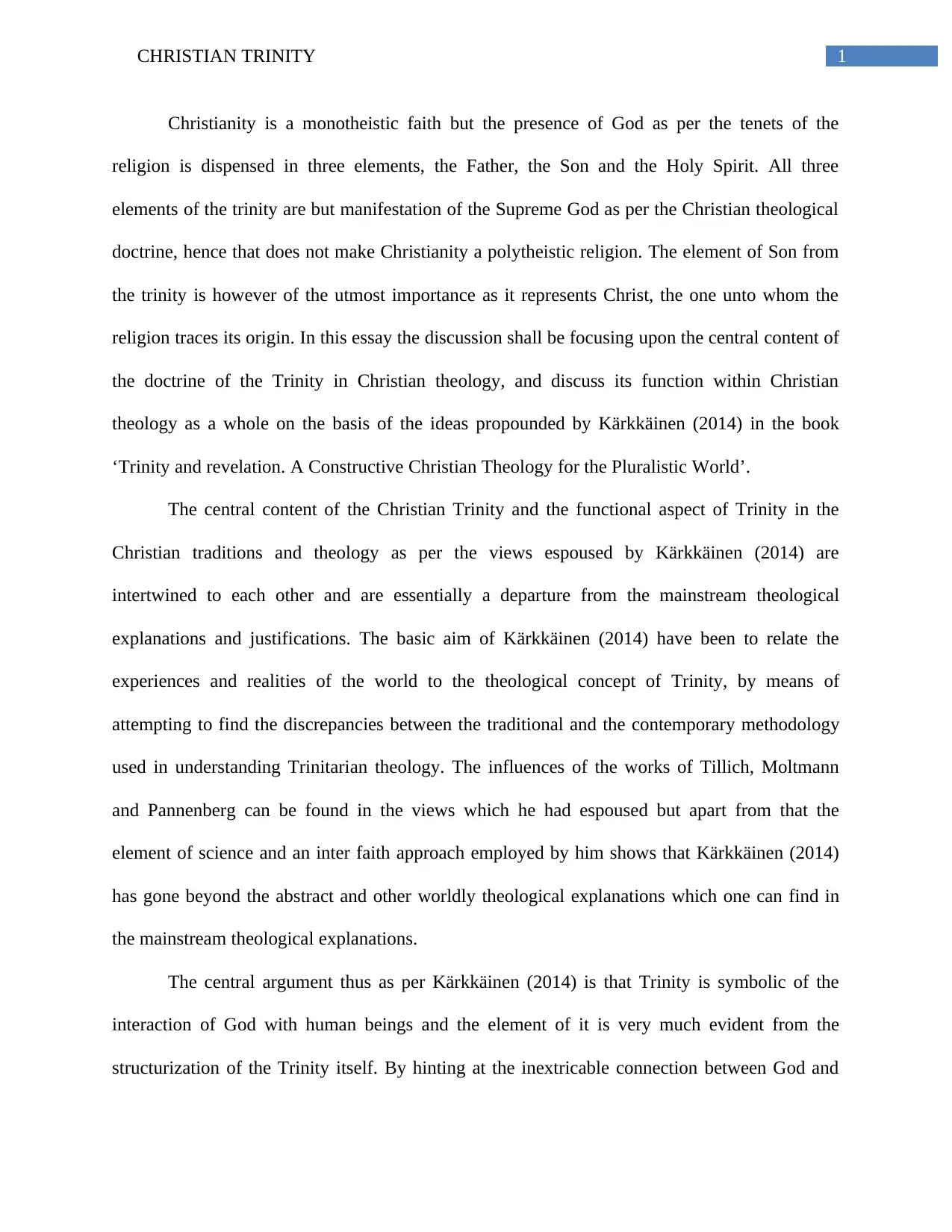
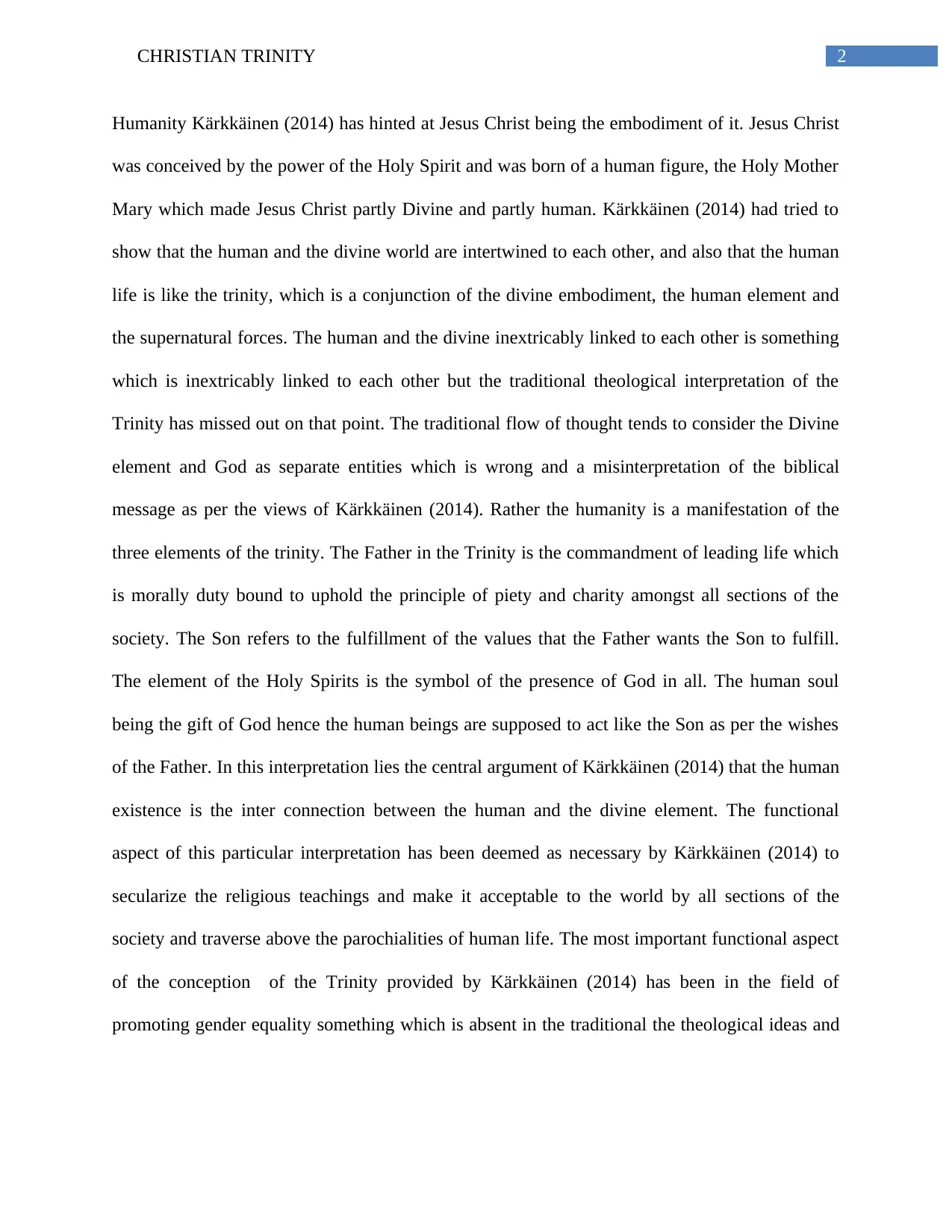

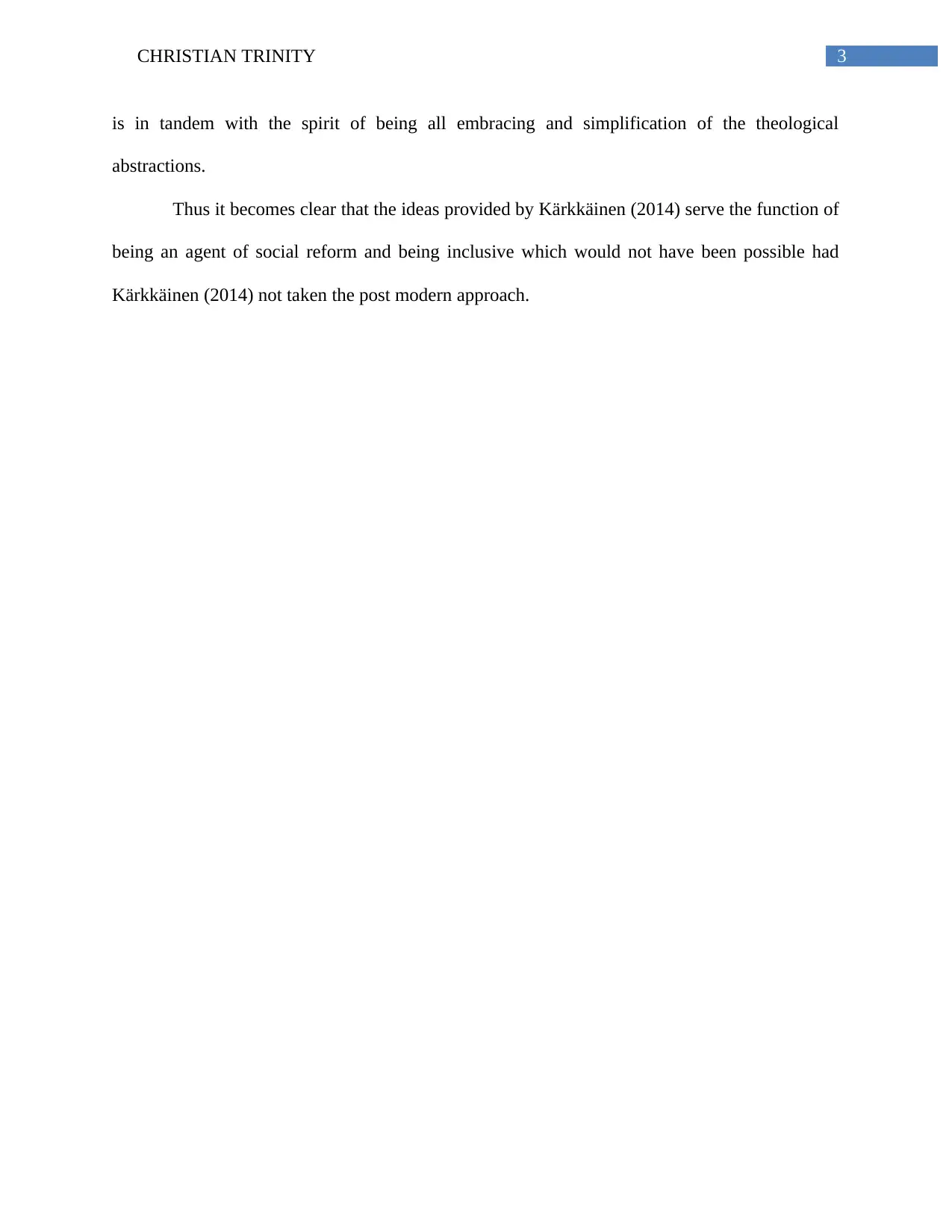
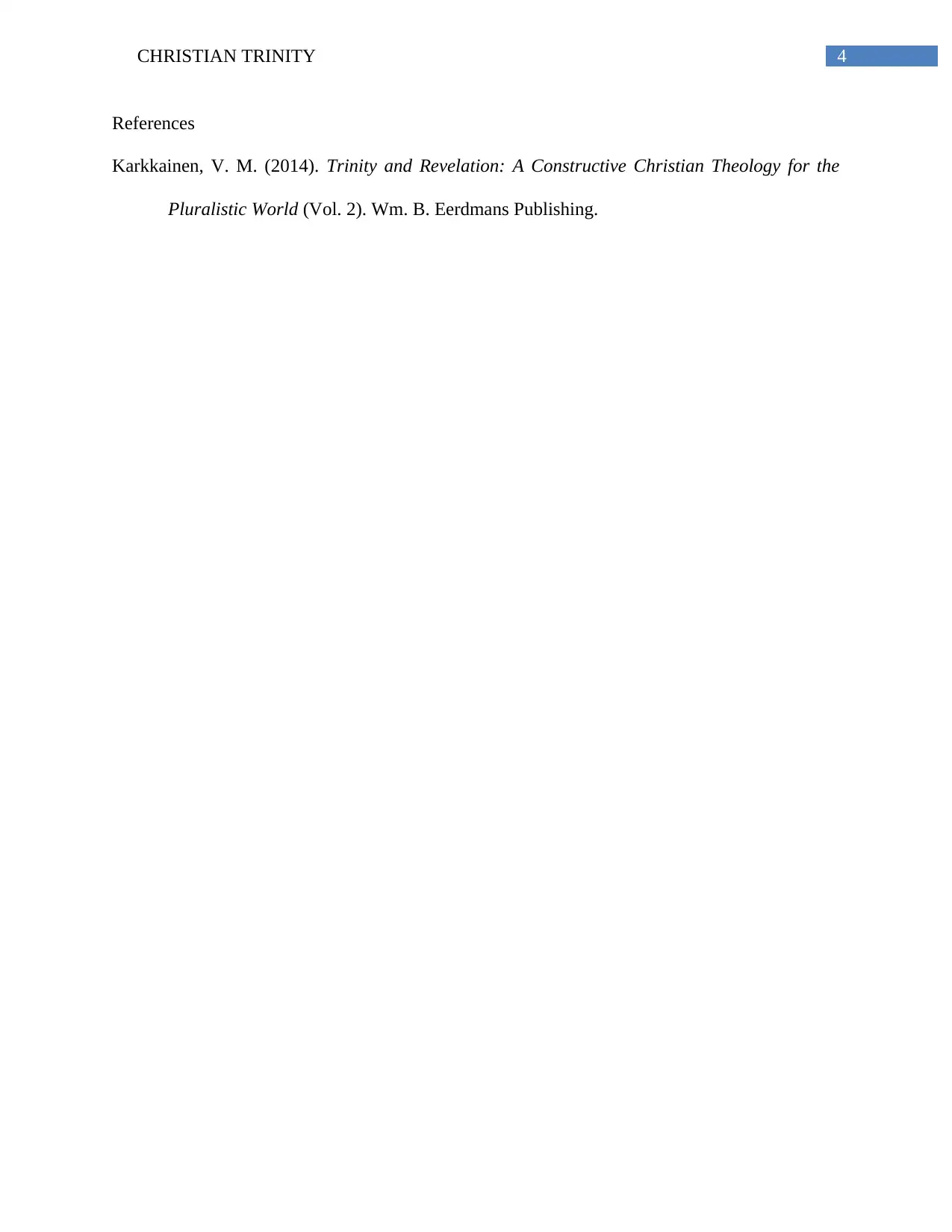




![[object Object]](/_next/static/media/star-bottom.7253800d.svg)